TrafficSchool.com Guide to Avoiding Accidents
Want to steer clear of the headache and hassle that comes with being involved in an auto accident? By practicing the handful of simple, yet commonly neglected, defensive driving skills below you will be well on your way to staying behind the wheel and out of the body shop:
Don't Be Another Distracted Driving Statistic
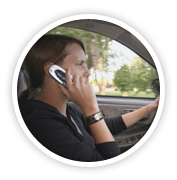
Looking to get into your first accident? Here's a helpful list of things to distract yourself with that'll get you into a fender-bender quicker than you can say "higher insurance rates":
- Playing with the radio dials or changing CDs
- Using your cell phone (even hands-free)
- Applying makeup, eating, reading, shaving, or anything else that involves you using your hands
- Staring at store windows, billboards, or interesting people on the sidewalk
- Talking to and looking at other passengers
- Daydreaming about what you'll do when you win the lottery
There's a Speed Limit for a Reason
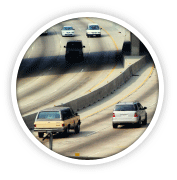
Yes, we know you've heard this one before, and yes, this should be at the top of the list, but we figured if we hid it down here you wouldn't skip over it this time. It's a pretty simple and commonsense piece of advice, yet a lot of people have trouble maintaining a safe speed for the given road conditions. It would be an amazing statistic to see how many fewer accidents there would be if every driver on the road went the appropriate speed. So, at the risk of sounding redundant, SLOW DOWN! Oh, and did I mention that you should slow down?
Keep Safe Space Cushions With Other Vehicles
Remembering that "a collision occurs when the space between two vehicles becomes zero", it doesn't take a rocket scientist to figure out that the best way to avoid a accident is to increase the distance between yourself and other vehicles. A good rule of thumb is to maintain a three second cushion with other vehicles. For example, look at the car in front of you and pick a fixed point on the road (street sign, intersection, etc.). When the car in front of you passes that fixed point, it should take you about 3 good seconds to reach the same fixed point. Driving an SUV, on slick roads, behind a big truck, or being tailgated? Then you should allow another second for added safety (giving yourself a four second cushion with other vehicles). And as far as tailgating goes…please save it for Super Bowl Sunday.
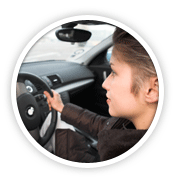
Keep Your Eyes Moving
You're not a horse, so please don't drive with horse blinders on. Rather, scan the entire road, looking ahead for potential hazards so you have time to react to them. Try to take in the big picture and don't stare straight ahead or you'll miss a lot of what going on around you. Also, checking your mirrors from time to time is important. In combination, scanning the road ahead of you and checking your mirrors will give you a "bubble of driving confidence", allowing you to know at all times what potential obstacles surround your vehicle.
A Knowledgeable Driver is a Better Driver
You wouldn't give a doctor a scalpel if they didn't know exactly what they were going to do with it, would you? So why pick up your car keys until you know all of the traffic laws, right-of-way rules, and street signs? Many accidents happen because a new driver is put in a situation they don't know how to handle. The more you know about traffic rules and regulations, the less likely you'll encounter a situation that causes you to panic and wind up in a traffic accident.
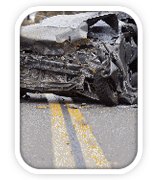
Drinking? Lose Your Keys Please
"Don't Drink and Drive", "Think Before You Drink", "You Booze You Loose" … you've heard them all, but they're worth repeating. According to MADD.org, an average of one person dies every 30 minutes in an alcohol-related crash. So please, put down the keys and call a cab if you need to. After all, you wouldn't be too excited about going into surgery if you knew your surgeon was drunk, high, or anything in-between. So why drive if you're in the same state.
Treat Canyons with Caution
Can't see where the road ahead of you is going, such as on a steep hill or winding canyon road? Then slow down and be prepared to stop if needed. According to the CA DMV, "Any time your view is blocked by a hill or a curve, you should assume there is another vehicle ahead", so make sure you slow down, look for hazards, and stay to the right side of the road.
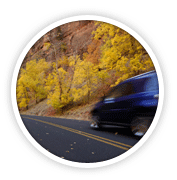
Respect the Road Conditions
In a perfect driving world, the skies would always be clear, the road always dry, and you could see miles down the road. However driving conditions aren't always perfect, so the burden is on you to drive more astutely when weather rears it's ugly head. The best thing you can do when weather conditions are less than perfect is stay home. Ask yourself, "Do I really need to drive right now?" If the answer is yes, then do it with caution. Raining, snowing, foggy, or nighttime? Turn on your lights and adjust your speed accordingly, adding an extra second or so to your following distance with other cars. Or maybe it's sunup or sundown and the light is blinding: lower your visor or put on your sunglasses and slow down sufficiently.

